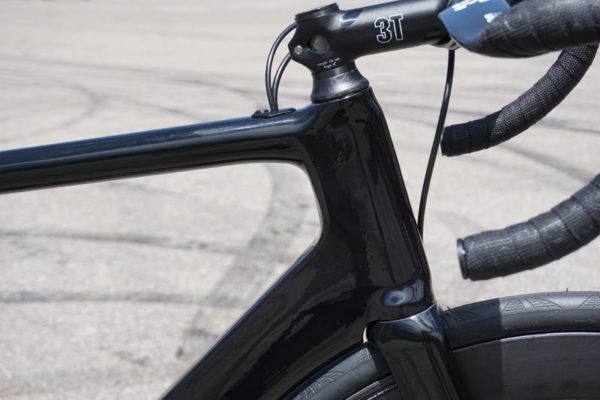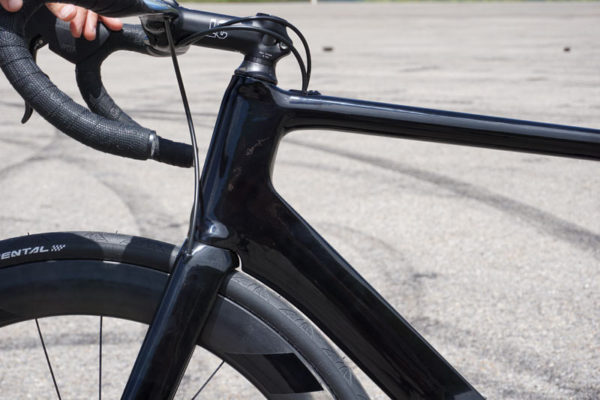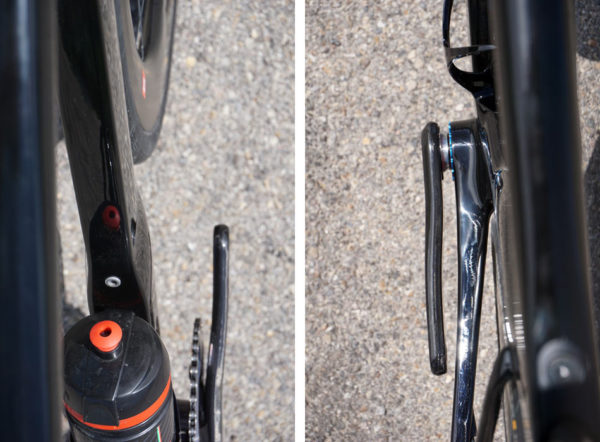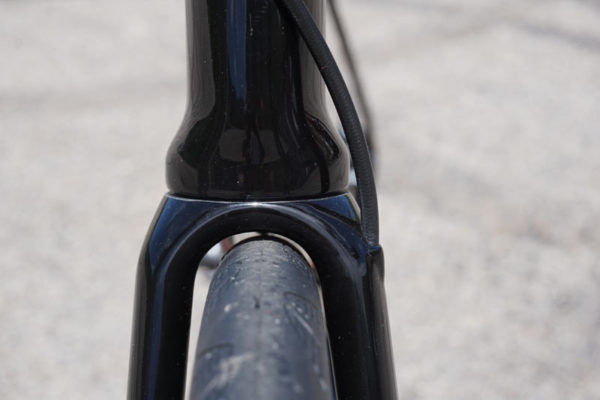It’s been six years since Gerard Vroomen last designed a road bike, and this new one is an idea that he first started working on 10 years ago, but the market wasn’t there. It took quite a while for people to want wider tires. Many years ago, when he was at Cervelo, they spec’d 25mm tires and people freaked out, saying they were far to big. Fast forward to today, and we all want to cram 28s into our frames to improve comfort and control.
The new 3T Strada does that and more as the first aero road bike designed around wide tires. Oh, and there’s no front derailleur…
The Strada isn’t just about wider tires or a lack of front gears. It’s a new take on aerodynamics thinking with overall tube shaping. Arcfoil is their name for a new philosophy on tube shaping, taking air flow’s curvature into consideration. They say air doesn’t flow perfectly horizontal, that it hits the downtube and starts flowing upward at first, then levels out as it passes over the tube. So, they shaped the tubes accordingly.
They also increased the width in front of the water bottle to improve flow around it.
The biggest new thinking is about the clutter around the crankset with water bottles, front derailleurs and two chainrings. All of that blocks wind and forces air to go wider, all the way out around the legs.
Getting rid of the front derailleur and small chainring lets air flow around the seat tube, between it and the chainring, keeping it more streamlined against the bike.
This also let them optimize the seat tube’s shape to cover the rear wheel’s leading edge and further optimize air flow.
About that gearing. They say an 11-36 cassette with a single chainring has the same range as a compact cassette with a double, but the gear steps are huge. A standard 11-28 cassette doesn’t have quite enough range for a 1x system, but has good steps between gears. Their solution is to create their own cassette, which will have single tooth steps for the first five cogs and a 350% (or greater) range. They say that’s equivalent to the prior generation Ultegra group’s recommended combination.
They’re not ready to show their cassette yet, but are hinting strongly that it might be sitting on the as-yet-unused SRAM XDR driver body freehub system. So far, that standard hasn’t been used and there’s not actually a production cassette designed for it, but it’s out there. You can mount any of SRAM’s XD-specific mountain bike cassettes on it with a spacer, which suggests there’s room on it for a proper 12 speed (or more) road cassette. SRAM is pushing the 1x road systems, and this could be the start of it all. But, for this particular bike, they’re claiming to have their own cassette with very specific gear steps. If we had to guess, a 10-35 provides that 350% range and would work on XD, but they also say the 40-tooth max XT rear cassette shown on this bike works really well.
We won’t have to wait long to find out, the bike will go on sale in July 2017. So, yeah, we’re getting ahead of ourselves a bit with this post’s headline, but seems like the writing’s on the wall.
Back to tires. The 3T Strada is designed around 25-30mm tires. It’s for disc brakes only, which lets them optimize the design.
Fork crown is minimal, which not only has a smaller frontal area, but also pulls the wheel and tire closer to the downtube to improve overall aerodynamics.
They say they’ve done wind tunnel tests and are “very happy” but aren’t ready to release the actual data.
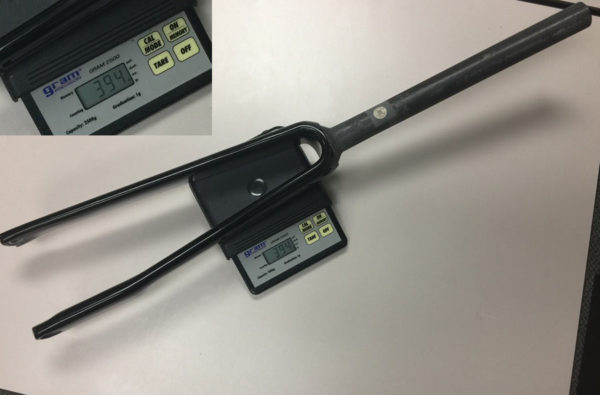
Frame weight is claimed at 970g for medium with paint and hardware, 395g for the fork with uncut steerer. Available in S/M/L/XL with the M and L coming available in July and others following shortly thereafter. Price TBD. More tech details will be released closer to the bike’s launch, they’re intentionally keeping a few things secret until then, but leave questions in the comments and we’ll be sure to get answers.


